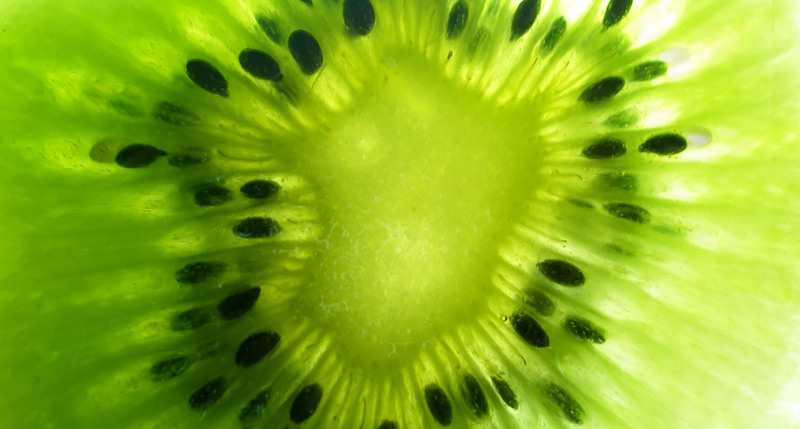You’ve seen it on grocery shelves time after time: labeling claiming that a product is “all-natural” and other products claiming to be “organic.” What’s the difference between the two?
While it seems like “natural foods” should be just as safe, toxin-free and healthy as organic foods are, that’s not the case. The term natural doesn’t imply that a product is organic. Even so, most consumers would assume that if a product is labeled as being “natural” it would at least be minimally processed and without any added antibiotics, hormones or artificial flavors. Right? Wrong.
USDA guidelines for labeling
While USDA guidelines for labeling a meat or poultry product as natural indicate that the product should not contain artificial ingredients, color or preservatives, the use of growth hormones, antibiotics or other chemicals are fair game. However, outside of meat and poultry, each company essentially makes its own decision about what it considers as a “natural” product. In fact, with no rules or regulations by either the USDA or FDA on what basic requirements a food or product must meet to be labeled “natural,” you really don’t know what you’re getting.
Sadly, many food manufacturers place a “natural” label on foods that actually contain heavily processed ingredients.
What does an organic label mean?
The good news is, it means quite a bit. The organic specification is the most heavily regulated qualification in our entire food system. When you buy a product labeled “USDA certified organic,” that manufacturer is required to verify through certification and both planned and unannounced third-party inspections that it is 100% in compliance by both producing and processing its products with USDA organic standards.
An organic label guarantees that there are:
- No toxic synthetic pesticides
- No toxic synthetic herbicides
- No synthetic nitrogen fertilizers
- No antibiotics given to animals
- No synthetic growth hormones
- No cloning
In short, products certified with a USDA certified organic label should be free of many of the toxic chemicals that are prevalent in our food system.
Why go organic?
Organic foods are typically more expensive than either naturally or conventionally grown foods. But there are some good reasons to consider eating organic foods whenever possible:
- Organic fruits and vegetables have fewer pesticides on them. Because the USDA tightly regulates the type and number of pesticides and herbicides organic farmers can use, the produce gleaned from these farming techniques can help reduce your level of toxic chemical exposure. The Standard American Diet exposes us to a large number of toxins; reducing this toxic load is beneficial.
- Organic produce is typically fresher due to a lack of preservatives to extend its shelf life. Fewer preservatives = lower toxic load = good news for your body!
- Organic farming methods have minimal environmental impact
when compared with conventional farming methods. Because no synthetic pesticides, weed-killers or fertilizers are used, pests are deterred or controlled via natural methods including birds, beneficial insects and traps. The reduced pollution and increased soil fertility along with lower energy requirements makes the entire organic process more earth-friendly.
- Organic livestock and poultry are healthier, because they have access to the outdoors and are fed organic, hormone-free and non-GMO feed. In addition, organic famers use natural disease prevention methods (rather than antibiotics), including rotational grazing, clean housing and a healthy diet.
- Organic foods can provide more nutrients than conventionally raised foods. Conventional farming can deplete the soil of nutrients, because artificially produced fertilizers can be used. With organic farming, the use of crop rotation and natural fertilizers mean fruits and vegetables can be higher in nutrients such as antioxidants, anthocyanins and flavanols – all beneficial compounds.
- Organic foods are GMO-free. Genetically modified organisms (GMOs) are the result of gene splicing and genetic engineering with the purpose of producing plants that can withstand weed-killers or repel insects. There is controversy over whether GMO foods are healthy or harmful to humans. By eating organic meat, cheese and produce, you can limit your exposure to GMO foods until conclusive studies can be done to determine their impact on health.
As consumers, we have the power to choose how we spend our grocery dollars, and food producers are listening. Do you remember how many organic products there were in the 1980s? Not many! As demand has grown, supply has increased.
What are the Dirty Dozen and the Clean 15?
If you’re concerned about the higher cost of organic foods, the Environmental Working Group might be able to help you decide which foods to buy organic and which to buy conventional.
EWG’s “Dirty Dozen” list has the 12 foods containing the highest levels of pesticides: strawberries, spinach, nectarines, apples, peaches, pears, cherries, grapes, celery, tomatoes, sweet bell peppers and potatoes.
The “Clean 15” lists the conventional foods with the least pesticide residue: sweet corn, avocados, pineapples, cabbage, onions, sweet peas, papayas, asparagus, mangos, eggplant, honeydew melon, kiwi, cantaloupe, cauliflower and grapefruit.

